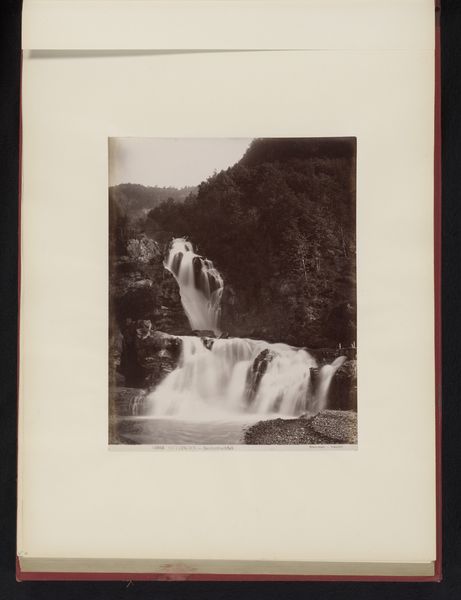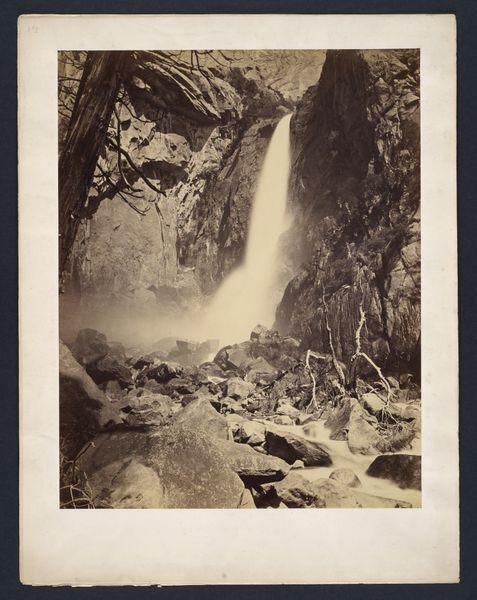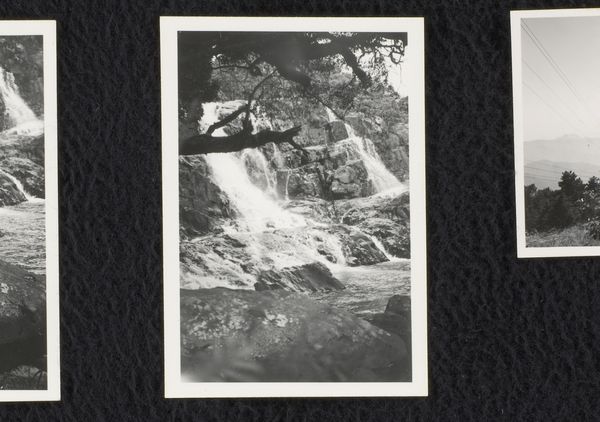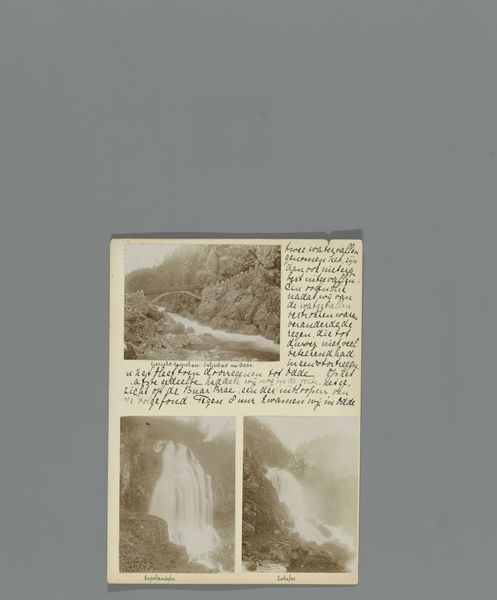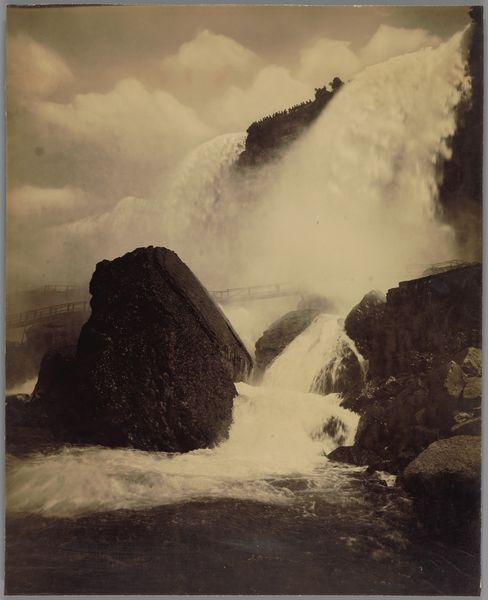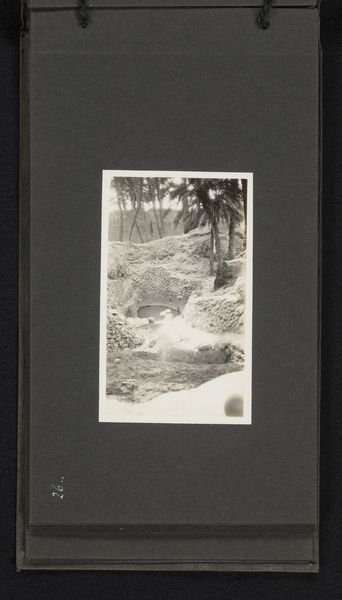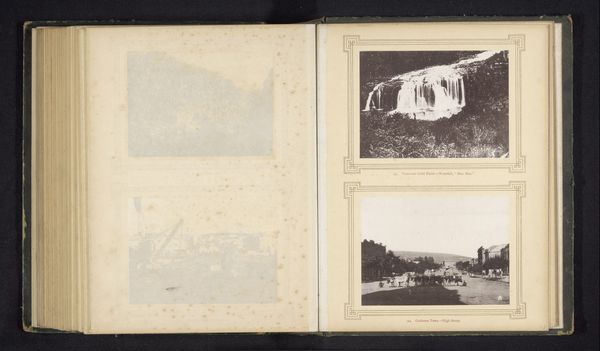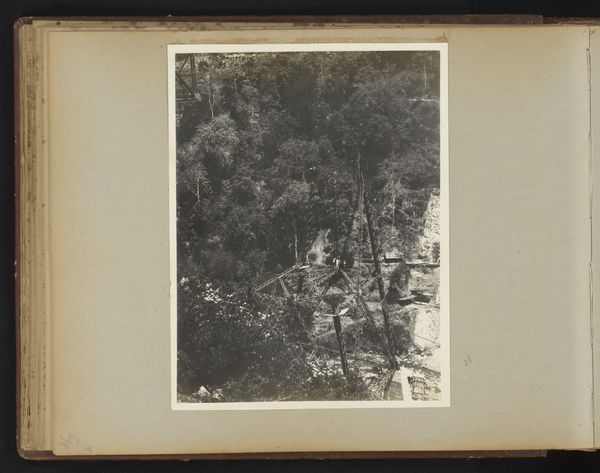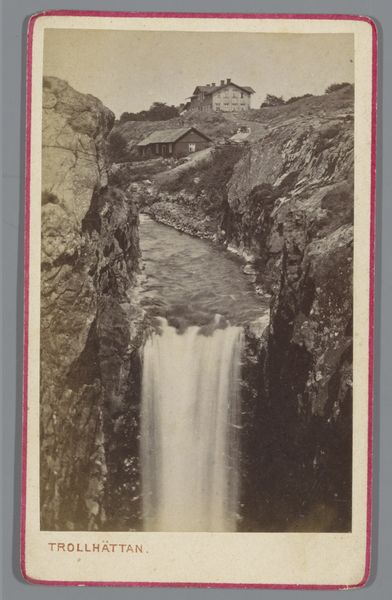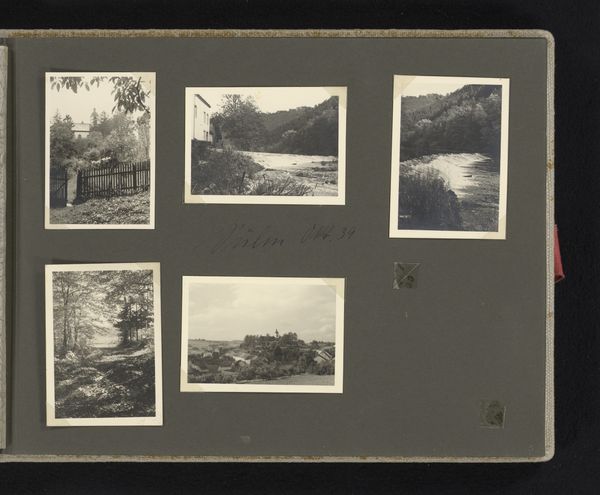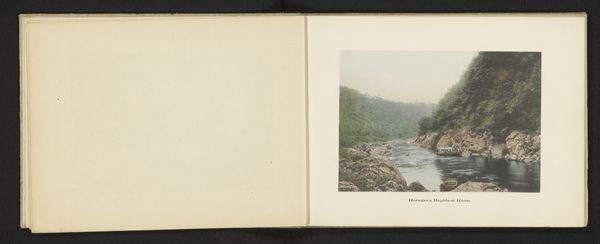
print, photography, gelatin-silver-print
# print
#
landscape
#
river
#
photography
#
gelatin-silver-print
#
mixed media
#
watercolor
Dimensions: height 80 mm, width 105 mm, height 148 mm, width 200 mm
Copyright: Rijks Museum: Open Domain
Curator: Right, let’s look closely at these photographs. We're looking at a piece entitled "Stroomversnellingen bij Moengo," dating roughly between 1925 and 1935. They appear to be gelatin silver prints, possibly part of a larger collection. Editor: My first thought? Turbulent. Both images vibrate with energy – the top one especially, with what looks like people struggling against powerful rapids. The light and dark areas create a stark contrast. Curator: Indeed. Considering these images as products of their time, Moengo was a significant bauxite mining location. The photographs could be connected to the economic and labor activities of the region. Think about how mining changed the landscape and the lives of those working there. Editor: So you’re suggesting that these images of seemingly untouched nature might, in fact, be deeply intertwined with industry? Perhaps commissioned by the mining company? It changes the context entirely, making the "untouched nature" a sort of visual lie. The very material reality being exploited is what’s depicted. Curator: Precisely! These prints are not simply landscapes; they are documents, perhaps even propaganda. Note the people in the first image. How are they represented? As part of the scenery, or as active agents reshaping the landscape? The way they navigate those rapids probably mirrors the precariousness of their livelihoods. Editor: And what about the scale? We're seeing what I presume is a hand-mounted gelatin print here, but it evokes this massive industry that likely reshaped lives and terrain. The disparity in scale asks a quiet question, no? A little photograph belying massive exploitation. Curator: An excellent point. The apparent documentary quality belies the underlying socio-political dynamics. Who controlled the image? Who benefited from its circulation? Those questions frame our understanding. Editor: It's fascinating to consider these gelatin prints, in their physical form, as objects deeply implicated in a history of resource extraction and the depiction of labor. The tension between art, document, and propaganda is what I’ll be pondering long after we leave here. Curator: I'll be considering its relationship to the broader narrative of colonialism and its enduring impact on the Surinamese landscape and its people.
Comments
No comments
Be the first to comment and join the conversation on the ultimate creative platform.
